
The John Trumbull Birthplace, also known as the Governor Jonathan Trumbull House, is a historic house museum on the Lebanon Green in Lebanon, Connecticut, built in 1735 by Joseph Trumbull as a wedding present for his son Jonathan (1710–1785). The house was a center of political and military strategy during the American Revolutionary War, when Jonathan Trumbull was Governor of Connecticut. It was also the birthplace of John Trumbull (1756–1843), an artist known for his depictions of the war and its people. The house was designated a National Historic Landmark in 1965.
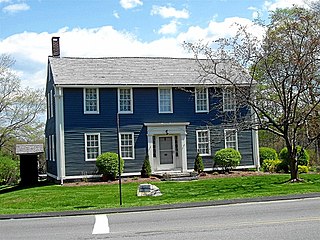
The William Williams House is a historic house in Lebanon, Connecticut at the junction of Connecticut Routes 87 and 207, a National Historic Landmark. It is significant as the residence of Founding Father William Williams (1731–1811), who was a delegate from Connecticut Colony to the Continental Congress and a signer of the Declaration of Independence. Williams lived here from 1755 until his death, and it is a well-preserved and little-altered colonial-era house.
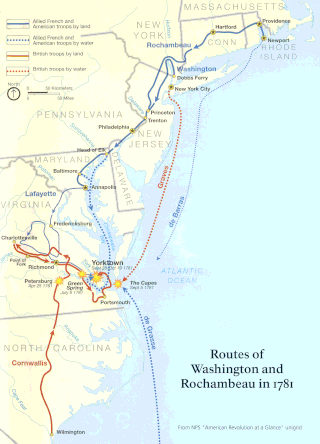
The Washington–Rochambeau Revolutionary Route is a 680-mile (1,090 km) series of roads used in 1781 by the Continental Army under the command of George Washington and the Expédition Particulière under the command of Jean-Baptiste de Rochambeau during their 14-week march from Newport, Rhode Island to Yorktown, Virginia. 4,000 French and 3,000 American soldiers began the march.
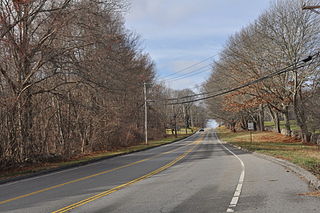
The March Route of Rochambeau's Army: Scotland Road is a historic road section in Windham, Connecticut. Extending along Scotland Road, from itsintersection with Back Rd. to 80 Scotland Road in, it is an evocative portion of the historic march route of the French Army under the Comte de Rochambeau in 1781 and 1782 during the American Revolutionary War. The troops camped beside the road within this segment in 1782. It was listed on the National Register of Historic Places in 2003.
The 5th Hussar Regiment was a French Hussar regiment.

The Dorrance Inn, also known as the Samuel Dorrance House, is a historic former inn at 748 Plainfield Pike in Sterling, Connecticut built about 1722. It is notable as a place that hosted officers of the French Army in 1781 and 1782, as it was along the march route taken by French commander Rochambeau's troops on their march to meet the Continental Army under General George Washington. Dorrance's Inn is one of a few places mentioned by name in multiple accounts written by French officers. The building was listed on the National Register of Historic Places in 2002 and is a contributing building in the Sterling Hill Historic District.

The Forty-Seventh Camp of Rochambeau's Army is a historic military camp site in Windham, Connecticut, located along Scotland Road a short way east of Windham Center. It was the site of a French Army camp in November 1782 on their march from the victory at Yorktown to Rhode Island. The camp site is considered of archaeological importance because it can shed light on transient military camp sites, whose locations are not often known. It was listed on the National Register of Historic Places in 2003.
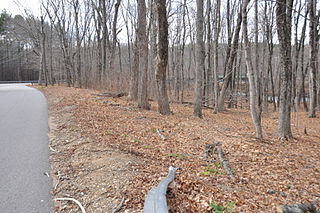
The Fourth Camp of Rochambeau's Army is a historic military camp site near Plains Road and Lovers Lane on the banks of the Shetucket River in Windham, Connecticut. It was here that the French Army encamped in the summer of 1781 under the command of Rochambeau on their march from Providence, Rhode Island to rendezvous with the Continental Army under General George Washington. Four divisions passed through, each one day apart. One of Rochambeau's aides described Windham at the time as "a charming market town, where, incidentally, there were many pretty women at whose homes we passed the afternoon very agreeably." Of the camp site, he wrote, "A mile away is a beautiful river with a fine wooden bridge. We camped on its banks very comfortably, though hardly militarily."

March Route of Rochambeau's Army: Old Canterbury Road is a historic site in Plainfield, Connecticut along the 1781 and/or 1782 march routes of Rochambeau's army. It includes a stretch of what is now Old Canterbury Road and a stretch of Canterbury Road whose environs evoke the period of the Rochambeau army's march. It is a 2-acre (0.81 ha) site that was listed on the National Register of Historic Places in 2003.
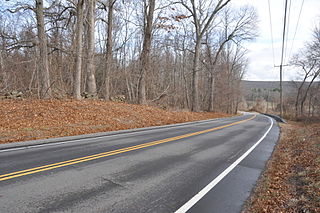
The March Route of Rochambeau's Army: Palmer Road is a linear historic district encompassing a portion of Connecticut Route 14 in eastern Scotland, Connecticut. It was listed on the National Register of Historic Places in 2003 as an evocative surviving element of the march route of the French Army commanded by Rochambeau during the American Revolutionary War in 1781 and 1782.

The War Office, also once known as the Capt. Joseph Trumble Store and Office, is a historic commercial building on the Lebanon Green in Lebanon, Connecticut, built about 1732 as a commercial building. It is most significant as the place from which Governor Jonathan Trumbull conducted military business during the American Revolutionary War. It is now part of the museum property managed by the Connecticut Society of the Sons of the American Revolution that also includes the Trumbull House and the Wadsworth Stables. The building was listed on the National Register of Historic Places in 1970.

The Caleb Baldwin Tavern is a historic house at 32 Main Street in the Newtown Borough Historic District in Newtown, Connecticut, built around 1763. The two-and-a-half-story house is considered historically significant for its role in movement of French Army forces under General Rochambeau, as it housed some of the army's officers in June 1781 on their march to the Siege of Yorktown. It is also an example of traditional 18th-century New England architecture and retains some details from that time period. It was listed on the National Register of Historic Places on August 23, 2002.

Camps No. 10 and 41 of Rochambeau's Army, also known as Site No. 97-87D, is a historical archeological site that was listed on the National Register of Historic Places in 2002. It encompasses the areas occupied by the French Army under General Rochambeau during their marches across Connecticut in 1781 and 1783. One of the major encampment sites is located on the grounds of the Hawley School, where a historic marker is placed.

The March Route of Rochambeau's Army: Hutchinson Road is a 2-acre (0.81 ha) historic road section in Andover, Connecticut. The section of Hutchinson Road, laid out in the early 18th century and formerly an alignment of United States Route 6, formed part of the 1781-82 march routes of Rochambeau's army which contributed to American victory in the American Revolutionary War. It was listed on the National Register of Historic Places in 2002.

White's Tavern is a historic former tavern on United States Route 6 in Andover, Connecticut, built in 1773. It is a well-preserved example of colonial architecture, notable for hosting French Army officers in the American Revolutionary War. It is now a private residence and was listed on the National Register of Historic Places in 1991.

The Josiah Bronson House is a historic house on Breakneck Hill Road in Middlebury, Connecticut, built about 1738. It is one of the town's few surviving 18th-century houses, and a good example of residential architecture from that period. It was listed on the National Register of Historic Places in 1982.
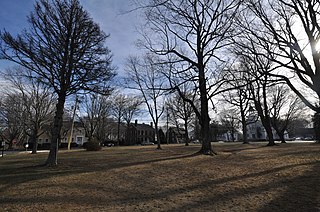
The Monroe Center Historic District is a 120-acre (49 ha) historic district in Monroe, Connecticut with significance dating to 1762. It was listed on the National Register of Historic Places in 1977.
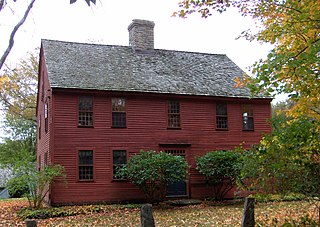
The Oliver White Tavern is a historic former tavern at 2 Brandy Street in Bolton, Connecticut. Built approximately 1750 as a residence, it is a good example of Georgian architecture. The tavern is historically significant because of its association with the march of Rochambeau's army during the American Revolutionary War, on their way to the Battle of Yorktown. The building, now a private residence, was listed on the National Register of Historic Places in 2002.
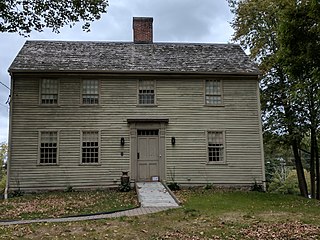
The David Sherman House is a historic house on Middle Quarter Road in Woodbury, Connecticut. Built about 1760, it is a well-preserved example of Colonial architecture. In 1781, David Sherman is reported to have hosted a ball for officers of the French Army of the Comte de Rochambeau during their march across Connecticut. The house was listed on the National Register of Historic Places in 2002.




















